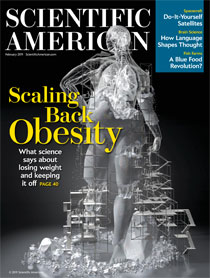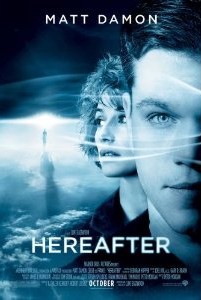Last week Brian Dunning blogged about his experience being filmed testing psychics for a Showtime series called “Versus,” that he strongly suspected was a set up to punk the skeptics. I waited a week to blog about my experience to confirm that this was, indeed, a set up. The verdict is in. We were punked. Or were we? You be the judge. Either way, fortunately Brian and I were both skeptical from the get go so they didn’t “catch us” in any Borat-like socially embarrassing moments.
Here’s what happened: Months ago I got a call from “Stephen Cardozo,” a “Field Producer” for “Little Duke Productions,” to do a talking-heads interview on psychics and how to test them — the usual stuff, so I didn’t think twice about it. I didn’t check up on the production company because I have never been burned and there were no signals of distrust for me to notice. I drove down to “Occidental Studios” in Los Angeles, where I was greeted by Cardozo, who was polite, loquacious, and jovial, and we sat in the green room for two hours talking. I suppose I should have been skeptical by the fact that I was not allowed on the set for the ongoing taping when I found out that it was Brian Dunning (whose skeptical abilities I trust) who was performing the tests of the psychics. I wanted to observe Brian’s protocols, but I was told that no one was “allowed on the set” because it was small and the cameras might see people standing around in the background. When I got on the set I noticed that this was not true, and in fact there were people standing around all over the place. The make-up woman spent about 15 seconds on me, which was also unusual, but it was the end of a long day so I figured she was just burned out.
Brian and I began a conversation about how science works and how to test psychics when one of the psychics he had tested earlier — improbably named “Shirley Ghostman” — burst into the studio wheeling a body bag on a cart and screaming about how he had Lee Majors in it because he predicted earlier that day that the “Six Million Dollar Man” had died, and he wanted Brian to pay up the $50,000 prize money for psychic powers. I unzipped the bag and there was this fat ugly balding guy with electronic gadgets duct-taped to his body (a calculator on his bicep, a computer keyboard on his hairy chest), about which I had a good laugh (not even close to a Lee Majors look alike!) I told him that Lee Majors had not died, at which point “Ghostman” said that Gandhi had lied to him. Right … Just before that I turned to Brian and said “we’re being punked!” But the spectacle went on for a while longer, growing more inane by the minute, so I played along waiting for everyone to break character and burst out laughing. That never happened, and as I was leaving Cardozo wanted to know if I wanted “security” to escort me to my car. I said “sure, why not?” and some little guy who was hanging around walked me out, as if he was going to protect me from a crazed psychic!
Out in the parking lot Brian told me that he thought the entire day was a set up, including phony cameramen, phony directors, phony make-up artist, etc. He was right. I initially thought that it was just Ghostman punking the Showtime people, but it turns out there is no show called “Versus,” the psychic’s real name is Marc Wootton (a British comedian and wannabe Borat character), and that Showtime has a show under production called “Untitled Marc Wootton Project.” (See the IMDB page.)
Here is Wootton’s “Shirley Ghostman” website.
Here are some other Ghostman punkings.
And here are some British skeptics catching on to Wootton’s antics fairly quickly.
Weirdly, I found this guy in real estate who had a similar experience (punking real estate brokers? — only in a housing crisis I suppose): Beware: Little Duke Productions for Showtime. Duping Realtors on camera while actors cause havoc in LA area homes.
The funniest story of all, however, was the punking of the actress and environmental activist Daryl Hannah, who explained in a Guardian article how she was punked by the same people. I have to admit that the image of a miniskirted “research scientist” in a lab coat who told Daryl how she had been fed by condors in the wild is a hellova lot funnier than Lee Majors in a body bag! Here’s the Daryl Hannah punking article.
From the story:
It turns out that, a little way off, Hannah was introduced to a “director” who looked to her to be far too Central Casting to be true. There were three cameras and 15 crew members, which she knew to be too many for a nature documentary. The “director” then took her to meet a “research scientist”, a woman in a miniskirt and lab coat who was peering from under too much blue eye shadow into the distance, supposedly looking for the perfect “condor release spot”. The scientist told Hannah that she herself had been fed by condors in the wild for three days, at which point Hannah started to laugh, and pretended she needed to use the bathroom.
She calls her manager. “I’m telling you, that was a full-on Punk’d-Borat situation,” she says. “The whole thing was a big ‘let’s make fun of celebrities’ show.” (Later, when I Google the production company named on the release forms, Little Duke Productions, all I can find is a random warning on someone’s Twitter feed: “Beware of Little Duke Productions for Showtime. May be dangerous. Please RT.”) The manager promises to look into it.
Now, here’s the other shoe falling: Brian and I figured out it was all a hoax, so I asked Cardozo in several voice mails and emails point blank: “this was a punking, right?” He didn’t return my calls and his only email answer was this generic statement:
“I did get your messages, but I’ve been in and out of the office, so I apologize for the late reply. Thank you again for participating in the show. The segment we filmed with you, the versus segment may or may not make it into the eventual show for Showtime. We obviously film more than we actually use in the series. Like you, we are interested in looking at all the methods and practices of the self-proclaimed psychics including those who participated in the versus segment. We also appreciated your participation in the segment as it goes to show how skeptics approach all types of people who claim to have psychic abilities. Feel free to contact me with any additional thoughts you may have. Best, Stephen”
So, naturally I concluded that it was the skeptics being punked, and I ranted and released the hounds (think Mr. Burns pressing the button) to go disrupt their show (since retracted!). But then the producer of the show, Misha Manson-Smith (whom I initially thought was a pseudonymic play on Sasha Baron-Cohen, the Borat actor/comedian), contacted Brian and explained: “Shirley Ghostman is a satirical dig at psychics” and “In case you and Michael are concerned about how you might appear on the show, I just wanted to let you know that I think you both came across very well and were excellent foils to Shirley’s idiotic outbursts” and that I shouldn’t be upset because “our show so clearly endorses his [the skeptics] position.”
Wow! So it is the psychics being punked, not the skeptics!! That’s a relief. It seems funnier now, of course, because it isn’t my goose being plucked. But since we’re on the topic of punks and hoaxes, I’m really not sure what the point of these Borat-like events are, other than getting a cheap laugh at someone else’s expense. Although Daryl Hannah’s environmental politics are not mine, what was the point of tricking her out to a condor sighting? Had she fallen for the mini-skirted scientist, I suppose, it would be an indictment of her politics beclouding her critical faculties. But she didn’t. So…
In my opinion, a hoax is only interesting if those who are hoaxed should have seen it coming, if they were blinded by their prejudices and presuppositions, and who were given clues but ignored them. In James Randi’s “Alpha Project” hoax he instructed his magician charges to fess up to using magic tricks (to simulate psychic power) if anyone ever asked them; but no one ever did, despite obvious clues they left behind. Alan Sokal’s “deconstruction” hoax of the lit-crit journal was beautiful because he submitted an article that was complete nonsense and was so chockablock full of the sort of jargon that lit-crit folks love to read that the editors of the journal who accepted it just assumed that it must mean something. But if you simply lie to someone and deceive them so well that they could not possibly have known you were setting them up, it only proves that you are a clever liar.



